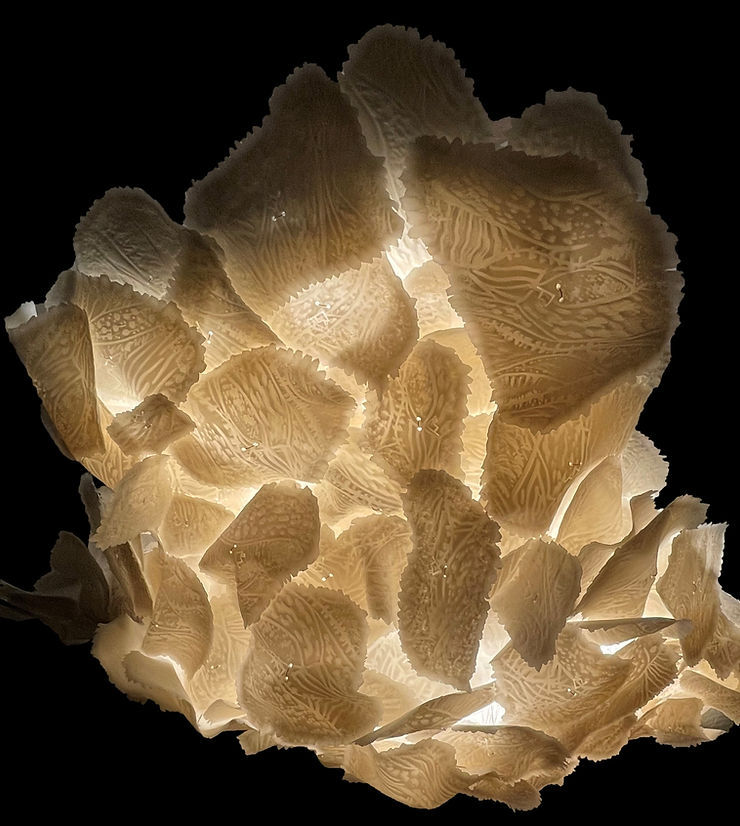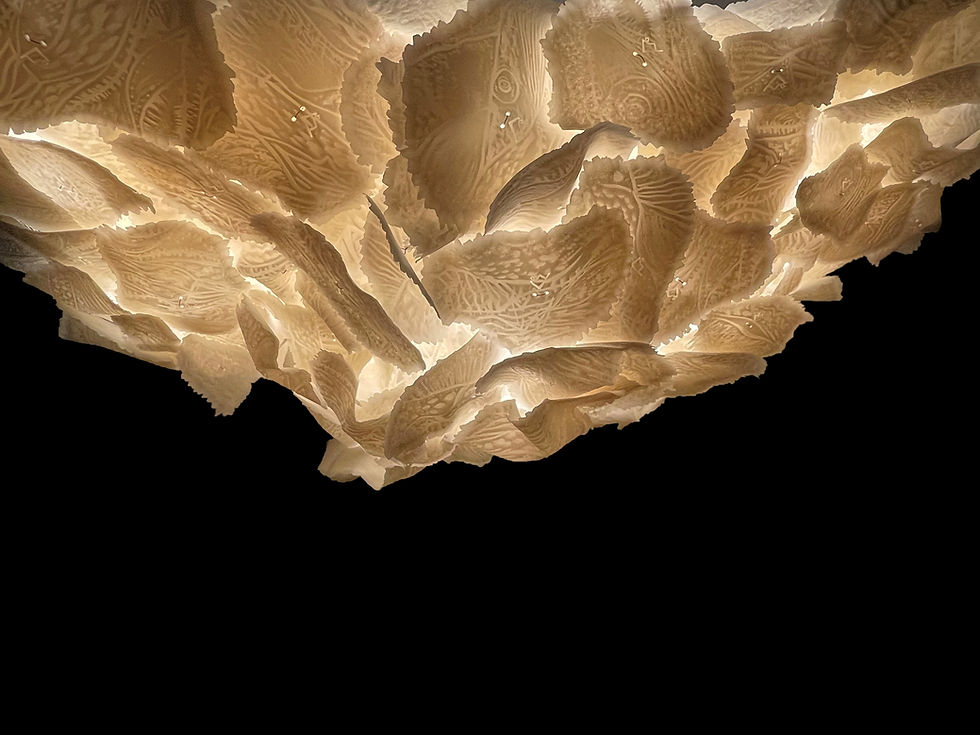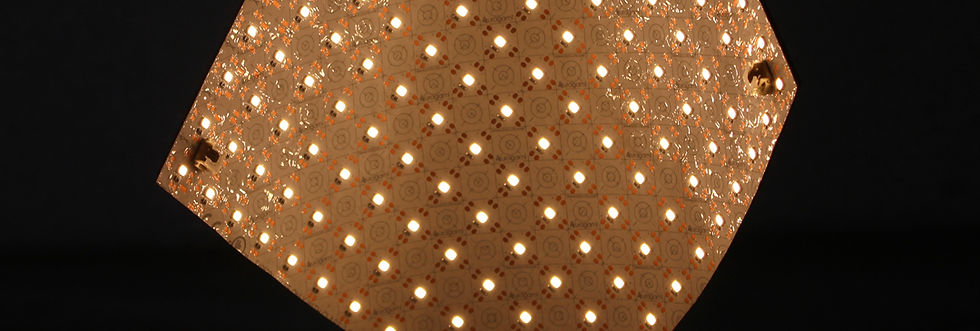Andra Munro
Artist: Andra Munro
Andra Munro selects Auragami from Applelec Lighting to illuminate porcelain art installation
For her latest sculptural installation, ceramic artist Andra Munro set out to explore the relationship between porcelain, light, and form, creating a wall-mounted feature where illumination is woven seamlessly into the material.
Known for her deeply personal approach to residential commissions, Munro begins by immersing herself in the client’s world. “If the light sculpture is for a residential project, I firstly discuss with the client their lifestyle, what it is they do, where they spend their free time, what their passions are and what inspires them on a daily basis,” she explains. “From there, I extract the essence and translate this into these bespoke light installations.”
Key features...
1.
Backlit porcelain wall installation
2.
Auragami backlit porcelain art sculpture
3.
Even, diffused illumination without hotspots
4.
Low-profile lighting ideal for delicate materials
In this particular piece, the creative direction was shaped by the natural environment surrounding the client’s home. The textures for the light art were inspired by the bark of nearby trees, capturing the unique fissures, crevices, and layered surfaces found in the wood. Created from delicate shards of porcelain, each element reflects a strong connection to nature and the organic forms it offers.

With porcelain’s natural translucency at the heart of the design, the challenge lay in finding a lighting solution that could provide a soft, even glow without distracting from the piece’s delicate construction. Auragami, the flexible LED light sheet from Applelec Lighting, was selected for its ability to deliver consistent illumination across irregular, curved surfaces.
“I wanted to create something that felt sculptural and soft — where the lighting wasn’t an afterthought but an essential part of the artwork,” Munro says. “Porcelain is such a beautiful material to work with, but it’s not always easy to light due to its variable thickness.”
Auragami’s cuttable, low-profile design made it ideal for the installation, allowing the lighting to sit close to the porcelain without causing hotspots or generating unwanted heat. “It gave me exactly what I needed,” she adds. “The even, diffused backlighting enhanced the form of the piece while remaining discreet and unobtrusive.”
The result is an illuminated artwork that subtly transforms depending on ambient light conditions. As the light gently diffuses through the porcelain, it creates a sense of depth and movement that shifts with the viewer’s perspective.
“People often assume the porcelain is self-illuminated — and that’s exactly the kind of reaction I was hoping for,” Munro adds. “The lighting enhances the work, but never distracts from it.”


